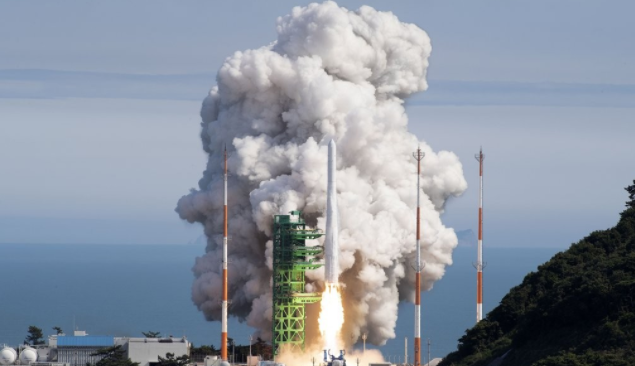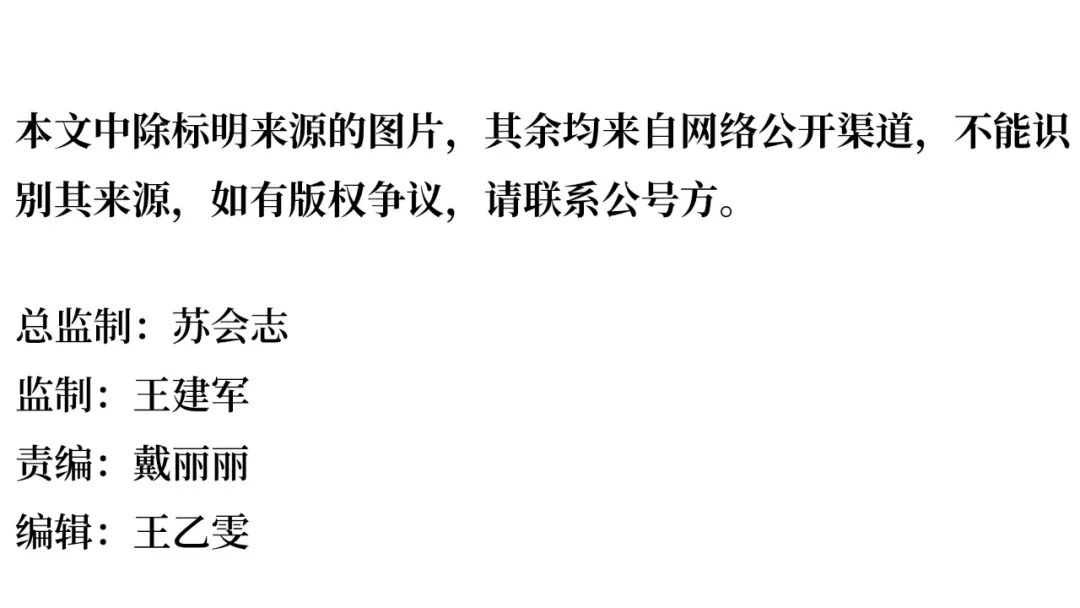After the successful launch of a domestic rocket, how big is South Korea's ambition?
Author:Look at the think tank Time:2022.06.27

South Korea's Lauding Rocket "World" (KSLV-Ⅱ) was successfully launched on the afternoon of June 21, local time. Picture source: Yonhap News Agency
After twelve years of independent research and development and a test of failure, the South Korean Lange Rockets (KSLV-Ⅱ) launched successfully on the afternoon of June 21, and the artificial satellite carried by the Rockets has entered the scheduled track operation.
South Korean President Yin Xiyue watched the rocket launch live broadcast in the video conference room of the Presidential Palace in Longshan, Seoul. After receiving a successful report, he gave his hands with his hands and said that "the road to space to space is opened", the government will Established the "Aviation Universe Hall" to systematically support the aerospace industry.
This is South Korea's first domestic carrier rocket to develop independently. The total weight of the "World" reaches 200 tons and 47.2 meters in length. It is equipped with 6 liquid fuel engines and the carrying capacity reaches 1.5 tons. At present, only the United States, Russia, France, China, Japan, and India can send more than 1 ton of practical satellites into space through independently developed carrier rockets, and South Korea has become seventh.
According to the plan of the Korean Aviation Universe Research Institute, after this launch, the "World" will be launched 4 times by 2027, investing more than 10 satellites to verify its performance and hope to explore the month in 2031. From the successful launch of the "World", what kind of results do South Korea want to run on the space competition track?
Wen | Chen Qinhan
This article is reproduced from the WeChat public account "Surging News" (ID: ThePapernews). The original first was released on June 22, 2022. The original title was "How much is South Korea's ambitions after the successful launch of domestic rockets", which does not mean watching think tank views.
1
The "World" is given the heavy responsibility
Nine years ago, South Korea's first carrier rocket "Luo Lao" was successfully launched after two attempts. At that time, the Korean media would be compared to South Korea's "Space Dream", but this dream is not completely "manufactured in South Korea": Technology Supporting the "Galaxy" Rocket 3 rocket 3 in North Korea in the launch time.
Regarding the development and launch cooperation of the "Lao Lao" rocket, South Korea has repeatedly spurred with Russia, which has further stimulated the determination of South Korea to develop a nationwide launch vehicle. In March 2010, the "KSLV-2) carrier rocket" World No. "was launched in March 2010, which carried the larger space dream of Koreans.
According to the "South Korea Herald" reported on June 20, South Korea invested 2 trillion won (about 10.4 billion yuan) for the "World", and more than 300 small and medium -sized private companies participated in the manufacturing of this domestic rocket, assembled More than 370,000 rocket parts.
Similar to the launch experience of the "Luo Lao", the "World" failed last year because the three -child engine was shut down in advance and failed to send the 1.5 -ton simulation load to the scheduled track. Watching the launch of the time of South Korean President Moon Jae -in in the center of Luo Lao's universe regretted that he was still confident that the launch in May 2022 was successful.
In fact, Wen Zaiyin failed to see the "World" during his term of office. The rocket with the Korean flag was postponed twice on June 15 and June 16 this year, one was due to strong winds and the other was data abnormal. After a lapse of 5 days, the "World" finally came to the second launching table of Luo Lao's universe center again.
In the launch on the 21st, in addition to a 1.3 -ton artificial satellite, the "World" also carried 1 rocket performance verification satellite, and 4 cube satellites developed by many local universities in Korea for research. Essence
"In the past, cube satellites were launched with rockets in other countries. From this launch, we can launch satellites at the right time according to our needs." Ahn Sang-IL, a senior researcher at the Korean Aerospace Institute, is in the "world" in the "world". A briefing before launch said.
South Korea began to enter the field of satellite business in the early 1990s. It was not the first commercial satellite until 1995 that it was decades later than the United States and the former Soviet Union. Target. As early as during the Roh Moo -hyun government, a series of "Ali Lang" satellites were used as a stepping stepping stalls to compete for space.
In order to allow private enterprises to accelerate the catch -up of Europe and the United States in terms of the space industry, the South Korean government has continuously promoted the transfer of public sector technology to the private ages and fiscal support and talent training for private aerospace companies. Like the "World", many private companies have gathered the efforts of many private companies.
A report released by Citi Group in US financial institutions in May shows that by 2040, the annual income scale of the space industry will reach $ 1 trillion, and the launch cost will decrease by 95%. Among them, the largest share of the space economy is the satellite market, with more than 70%. The satellite service industry is undergoing "a paradigm of demand". In addition to TV services, it is expected to expand to broad bands, honeycomb networks and the Internet of Things.
According to BBC, Song Jingmin, president of the South Korean Aerospace Technology Association, said: "The aerospace power has begun to enter the future aerospace industry. Especially resources are exhausted. Considering sustainable development, space development is essential. A choice. "
Of course, entering space not only starts from interests, but also focuses on the military field. 2
Space military power starts
"If the satellite is placed on the top of the rocket, it will become a space -carrier rocket. But if you install a warhead on it, it will become a weapon." Quan Yongzheng, a former Korean National Defense University professor, told the Associated Press, "The world," the world, "the world," the world, "the world," the world, "the world," the world, "the world," the world, "the world," the world, "the world," the world, "the world," the world, "the world," the world, "the world," the world, "the world," the world, "the world," the world. The successful test of the number helps to improve the strength of South Korea's research and development of ballistic missiles.
US media analysis pointed out that although the carrier rockets and intercontinental missiles have a lot of common technology, the "World" uses a liquid fuel engine, which must be kept at a very low temperature, and it needs to add longer injection than solid fuels to add more injection than solid fuel. Time is difficult to use in intercontinental missiles. Compared with the same use of liquid oxygen -oil engines, the "Falcon 9" carrier rocket, the near -ground orbital carrier capacity of the "World" is far from.
From a technical point of view, the "World" is difficult to match the world's leading level, but "Nikkei Asia" commented that from domestic rockets to submarine missiles, South Korea is working to become a space and military power. At present, South Korea is receiving satellite information from the United States and Japan to monitor North Korean missiles. After the "World" was successfully launched, South Korea is expected to establish a more strategic alliance relationship in South Korean, American and Japanese security cooperation through independent launching satellites.
In recent years, Hanmei's cooperation in the field of space is getting closer. In 2015, the South Korean Air Force established the Space Situational Awareness Room, which aims to receive real -time space data information provided by the US military. At the same time, a team deployed by the US Space Army also performs tasks in a US base in South Korea.
In the "Main Work Promotion Plan of the 2022" submitted by the Ministry of Defense last year, it focuses on the strong strengthening of space military forces, expanding related organizations and professional manpower, and striving to obtain military satellites. To this end, the Han Army will strengthen strategic cooperation with the United States in terms of artificial intelligence, information and communication, quantum technology and space development.
In March of this year, South Korea has successfully tested the solid fuel carrier rocket. One month later, South Korea and the United States signed the first bilateral documents on the research of joint space policy. Based on this document, Hanmei will continue to cooperate to share intelligence in the space field, cultivate space experts through training and exercises, and strengthen the interoperability of joint space operations.
"All countries are competing for the leading position of the aerospace industry to ensure their advantages in national security and future competitiveness." South Korean President Yin Xiyue promised in the election declaration that South Korea will make South Korea one of the seven major space powers in the world.
Uncle Ku Welfare
Uncle Ku's book is always there! Zhihu Book provided Uncle Ku with 15 "Grand Canal long rolls" and presented enthusiastic readers.中国大运河历史地理大百科,2.4米长卷展示3200千米黄金水道,饱览2500年宝贵遗产, 跨越8个省级行政区、35座城市,融合200多个地理、建筑、历史、人物、考古、 Folklore knowledge points, take you into ancient super projects comparable to the South -to -North Water and East Gas, and go to a museum -level humanistic geography. Please comment under the article that the top 2 (more than 50) who likes the highest likes will get a book.


- END -
my country's third aircraft carrier launch!"Fujian Ship" is here!

On the morning of June 17, the naming ceremony of the third aircraft carrier in Ch...
Ministry of National Defense: China and ASEAN are inseparable security communities

Xinhua News Agency, Beijing, June 30 (Reporter Zhang Ye) China and ASEAN are an in...